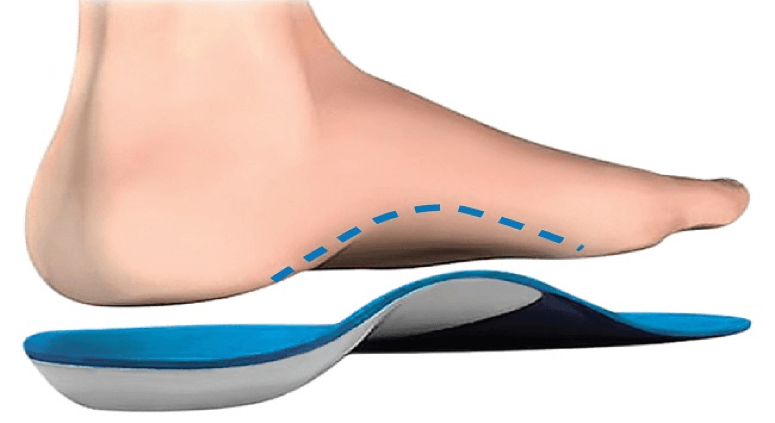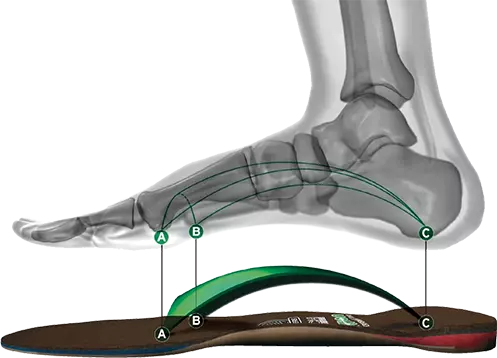Adjusting Ski Boots for Comfort Dacono CO
Cold feet in ski boots is a typical issue faced by skiers, affecting their comfort and total performance on the slopes (How to Put On & Fit Ski Boots Guide Loveland CO). Warmth is crucial for an enjoyable snowboarding experience, and cold feet can diminish the joys of gliding down a snow-covered mountain. Understanding the reasons behind chilly ft in ski boots and strategies to combat it might possibly make a big difference in your snowboarding adventures
Ski boots are designed to provide the support needed for skiing however may additionally be a source of discomfort. A tight fit, whereas crucial for management, can restrict blood move, leading to chilly feet. This is especially true if the boots are too small or not properly fitted. Ensuring that ski boots are the best size is the primary step in stopping cold toes.
Innovative Approaches to Boot Fitting Longmont CO
Another issue contributing to cold ft in ski boots is moisture. When your toes sweat contained in the boots, that moisture can lead to a chilling effect because the temperature drops. Skiing typically entails high power expenditure, and the heat generated inside the boots can rapidly be lost as sweat accumulates. Using moisture-wicking socks or boot liners can significantly alleviate this downside.
Insulation in ski boots plays a vital role in maintaining toes warm. Many boots include varying degrees of insulation, and the selection of material can influence how nicely they retain heat. Insulated boots are designed to maintain heat in, but deciding on the right degree of insulation in accordance with the climate and particular person preferences is crucial. Some skiers favor further layers, while others could find thicker liners too constricting.

Choosing the best socks is just as essential as deciding on the best boots. Thick, cumbersome socks can impede circulation, resulting in cold toes in ski boots. Opting for thin, high-performance ski socks produced from materials designed to wick moisture may help hold feet heat. Additionally, keep away from cotton socks as they keep moisture and contribute to cooling down.
Another often-overlooked aspect is how one dresses for a ski outing. A comprehensive layering system is vital. For ski journeys, keeping the complete body warm ensures that extremities, just like the toes, keep warm as properly. Investing in high quality base layers, mid-layers, and outerwear can help optimize body temperature and circulation.
Professional Ski Boot Fitting Techniques Thornton CO
Using foot heaters or heated insoles may be particularly efficient for these susceptible to chilly feet. These devices present an extra heat supply and can be found in numerous types, from disposable chemical heaters to rechargeable battery-operated options. They can help delay comfort all through the day on the slopes.
Adjusting the way you fasten your boots can even make a major distinction. Ski boots must be cosy but not overly tight. A too-tight fit can constrict blood flow, leading to chilly toes. Learning the way to correctly adjust the buckles can help achieve a cushty fit that balances warmth and performance.
Take notice of how lengthy you spend standing nonetheless versus snowboarding. Cold toes are sometimes exacerbated by inactivity. During breaks or whereas ready in lines, toes have a tendency to chill down considerably. Making an effort to maintain shifting, even when waiting, might help keep warmth.
Ski Boot Fitting Supplies List Firestone CO
Plan your breaks properly. When taking a break, find a warm spot to relaxation. Stamping your toes or doing easy workout routines can hold your blood circulating and forestall chilly toes in ski boots. Remaining conscious of your physique's temperature can guide timely interventions to keep warmth locked in.
Remember that choosing the right ski resort and conditions can also affect how cold feet feel. Some areas are identified for his or her biting winds and decrease temperatures. More protected ski areas with sunnier circumstances can provide a better snowboarding expertise. Thus, the selection of skiing location can indirectly affect how chilly or heat your ft feel all through the day.
Finally, staying hydrated is essential. When the physique is well-hydrated, circulation improves, which is important for maintaining heat. It’s straightforward to overlook to drink water while involved in actions, especially in cold climate, but making a conscious effort to stay hydrated can have significant advantages.

Addressing chilly ft in ski boots typically entails trial and error, adapting gear and strategies to search out the perfect solution for particular person wants. Every skier is completely different, and what works for one person might not work for another. It’s essential to experiment with various socks, boot types, and layering methods to find the simplest mixture for oneself.
Regional Custom Boot Fitting Services Superior CO
Ultimately, enjoying snowboarding to the fullest requires attention to the little issues that impact comfort and performance. Understanding the causes of chilly ft in ski boots and implementing strategies to forestall it could transform a cold ski day into an exhilarating expertise. By keeping feet warm, skiers can give attention to soaking in the beauty of the mountains and the fun of the experience.
Cold feet shouldn't be a recurring challenge however quite an opportunity for skiers to refine their setup and strategies. Emphasizing warmth and comfort ensures a more gratifying day on the slopes, allowing for longer and more fulfilling runs. Each skier can take proactive steps to mitigate the chilliness, turning skiing right into a joyous winter adventure rather than a battle towards the chilly.
As the season unfolds, keep in mind that snowboarding is about enjoying the mountains, the recent air, and the excitement of gliding on snow. Keeping cold toes at bay enhances every side of the expertise, allowing for a give consideration to approach and delight rather than discomfort.
Is Bootfitting Really Necessary? Lyons CO
Finding pleasure in skiing is possible by addressing every little thing from boot fit to sock selection, layering, and hydration. By prioritizing these parts, skiers can guarantee they have the proper measures in place towards cold ft, permitting every journey down the slope to be as exhilarating as intended.
- Proper fit of ski boots is essential; too much room can lead to chilly feet due to inadequate blood circulation.
- Insulating footbeds produced from supplies like gel or specialized foam can improve heat by providing thermal safety.
- Toe heaters or heated insoles are effective equipment to fight cold ft, particularly in extremely low temperatures.
- Keeping ft dry is crucial; moisture from sweat can lead to significant cooling, so moisture-wicking socks are really helpful.
- Choosing the proper socks, typically produced from merino wool or artificial blends, can considerably improve warmth and comfort.
- Periodically taking breaks permits for foot motion and circulation, helping to alleviate numbness and improve heat.
- Ensure that ski boots usually are not overly tightened, which can prohibit blood circulate and contribute to chilly sensations.
- Tuning the boot’s insulation stage based on weather circumstances can hold toes warmer; consider models with adjustable options.
- Using ski boot heaters or foot warmers can present a constant supply of heat during lengthy outings on the slopes.
- Familiarizing oneself with layering techniques for ski gear also can assist in stopping chilly feet by maintaining general body heat.undefinedWhat causes chilly feet in ski boots?
Custom Fit Boot Liners Overview Lyons CO
Cold toes in ski boots is often attributable to poor circulation, inadequate insulation, or moisture within the boot. If your feet are cold, it might mean your boots are either too tight, not warm enough, or not fitted correctly.
How can I stop chilly toes whereas skiing?
To stop chilly toes, guarantee your ski boots fit properly without being overly tight. Use moisture-wicking socks made from wool or artificial materials, and think about boot heaters or heated insoles for added heat.
Ski & Snowboard Boot Fitting Overview Wheat Ridge CO
Are ski socks essential for keeping my feet warm?
Yes, ski-specific socks are designed to provide warmth while allowing moisture to escape. They are typically thicker around key areas like the toes and shin, enhancing insulation with out compromising comfort.
Is it okay to put on two pairs of socks in ski boots?
Wearing two pairs of socks can really limit circulation, resulting in colder ft. It’s higher to choose on a single, well-fitted moisture-wicking sock designed for snowboarding.
Evaluating Different Boot Fits Broomfield CO
What should I do if my feet get cold whereas skiing? (Strategies for Long-Distance Skiing Fit Erie CO)
If your feet become cold, take a break to warm them up. Remove your boots for a few minutes, wiggle your toes, and consider adding foot warmers or transferring to a hotter setting, if attainable.
Custom Fitting for Unique Feet Wheat Ridge CO
Can boot liners assist with chilly feet?
Yes, high-quality boot liners can considerably enhance insulation and heat. Consider custom or heat-moldable liners that conform to your foot, enhancing each comfort and thermal management.
How important is boot fit in preventing cold feet?
A proper boot fit is essential for preventing cold feet. Boots should be snug however not overly tight, permitting for good circulation whereas maintaining warmth contained. Poor fitting can lead to pressure points, restricting blood move.
Benchmarking Ski Boot Fit Adjustments Dacono CO
Do the type of ski boots have an result on warmth?
Absolutely. Insulated or high-performance ski boots typically provide better thermal safety. Research the particular features of boots, as some models prioritize heat together with performance.
Basics of Ski Boot Architecture and Fit Lafayette CO
Should I be concerned about moisture in my ski boots?
Yes, moisture can contribute to chilly ft. Always dry your boots completely after each use, and consider using waterproof boots or gaiters to maintain snow and moisture out whereas skiing.
What are some signs that my ski boots are too tight?
10 Steps to a Perfect Boot Fit Erie CO
Signs that your ski boots are too tight include tingling or numbness in your toes, chilly toes, or noticeable discomfort when sporting them - Boot Fitting Process Explained Dacono CO. If you experience any of these, contemplate getting an expert fitting or adjusting the boot measurement
click for more find more info